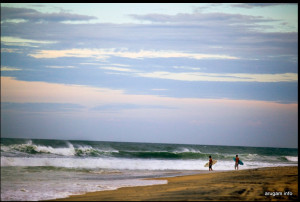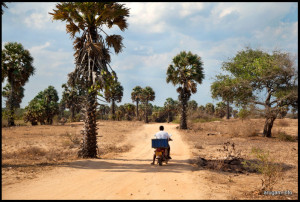The road to Arugam Baya??. A surfera??s paradise. This story ran in Gulf aira??s inflight magazine, Gulf Life. The images have also been used by CNN Traveller and by the Metro newspaper. Ita??s an arduous journey to Arugam Bay. Even after making it to Sri Lankaa??s capital Columbo, ita??s a further twelve hours along dusty roads.But this is a small price to pay for the amazing scenery and wildlife youa??ll see.
Famous for its glorious west coast resorts and elephant safaris, Sri LankaA?is a firm tourist favourite. But the east coast of Sri Lanka representsA?uncharted waters for most. Home to pristine beaches and a laidbackA?lifestyle, Arugam Bay is carving out a niche for itself as a surfingA?paradise. Natacha Butler visits the countrya??s latest safari hotspot to catchA?a few waves
Cozaar 50mg online Purchase lincocin ampolletas 
Ita??s a little after sunrise on Sri Lankaa??s east coast and at Arugam Bay theA?first surfers are out. Tousled-haired local boys and wave-chasing touristsA?breeze across the golden sand with well-worn surfboards tucked underarm.A?They head to the end of the long beach, to Main Point, where six-foot wavesA?rise and roll to shore.A?a??Ia??ve been surfing for 12 years, twice a day, everyday,a?? says Fawas Lafeer,A?the 26-year-old head of the Arugam Bay Surf Club. a??I love it,
I cana??tA?imagine life not surfing, which is why Ia??ll always live here; the waves areA?really good.a?? The waves are not just good, they are some of the best in theA?world, which is why surf-lovers have been making the journey to thisA?far-flung sleepy community on Sri Lankaa??s east coast for decades. In theA?1960s and 1970s they would set-off from the capital Colombo on an arduousA?nine-hour cross-country car journey on a barely-there road. Most wereA?Australians and Europeans chasing the thrill of an Indian Ocean ride.
Entranced by the breaks and a sweeping curved beach lined with palm trees,A?several ended up staying, helping to transform a poor fishing village intoA?the nationa??s top surf spot.A?a??Back then people came from everywhere,a?? says Anglo-Dutch civil engineerA?Fred Netzband-Miller, who arrived at Arugam Bay to surf in 1977, fell inA?love with the place and decided to call it home. He now runs the localA?hoteliersa?? association. a??It was the combination of quality waves and aA?beautiful beach.A?Although therea??sA?not much rain ita??s a very lush placeA?because of the rivers. Ia??ve travelled the world, but Arugam Bay is unique. a??The bay became such a hot destination in surf-circles that travellers neverA?abandoned it despite the shock of the devastating 2004 tsunami, whichA?battered the Sri Lankan coast on 26 December claiming more than 30,000A?lives, including one in ten people in Arugam Bay. They also defied nearlyA?three decades of deadly civil conflict between Tamil Tiger rebels and theA?Sri Lankan military. a??During the war surfers still came, they did not stop,they were not afraid,a?? explains Lafeer. a??You know surfers only think aboutA?surfing,a?? he laughs.
These days theya??re not the only ones falling under Arugam Baya??s spell. SinceA?the end of the conflict two years ago, Sri Lanka has opened up andA?travellers are increasingly leaving the tried-and-tested southwest coast andA?heading east, where wild empty beaches run for kilometres, elephants roamA?wild and ancient temples dot the jungle. It helps that the road from ColomboA?to Arugam Bay has improved and the drive is now down to around seven hours.A?Ita??s a picturesque ride across the centre of the island, Sri Lankaa??s hillA?country, where emerald-green tea plantations carpet escarpments and theA?cooler climate offers welcome respite from the heat. Approaching the coastA?the scenery opens out into shimmering rice paddy fields and lagoons whereA?water buffalo graze.
Arugam Bay is a farming and fishing community of three small villages andA?home to a melting pot of Tamils, Sinhalese and Muslims. Although moreA?tourists are making the journey, the place still feels enticingly isolated.A?a??Ita??s still very off the map, ita??s raw and undiscovered. Therea??s nothing butA?pristine beaches and beautiful nature here, but wea??re far away so you reallyA?have to want to come,a?? says Sri Lankan Sharon Tissera, whose familya??sA?colonial-style home has been converted into the elegant but funky HideawayA?boutique hotel near the beach. Guests can chose to stay in the main house orA?in one of the romantic whitewashed cabins in the grounds, all decorated withA?an eclectic mix of traditional and laid-back beach furniture.
Tissera spent years abroad in Australia and the United States before comingA?back to the place she calls paradise. A chef by profession she sources herA?produce from local organic farmers to serve up delicious fresh PacificA?Rim-style cuisine such as chargrilled fish with coriander vegetables andA?mango relish. She says therea??s much more to Arugam Bay than surf, and ita??sA?the varied wildlife and nature that are drawing a fresh generation ofA?visitors. a??You can ride a bike and within a few kilometres see wanderingA?elephants,a?? she adds.
Wandering elephants are not the only prize for animal-lovers. There areA?several wildlife parks near Arugam Bay, which are all easy day trips. TheA?closest is Lahugala Sanctuary, where elephants rub shoulders with bears andA?spotted deer. A little further afield is the Yala East National Park andA?Kumana Bird Reserve, where the adventurous can zig-zag in an off-road jeepA?past leopards and more than 200 bird species.
The road south to the Yala East National Park winds through a sereneA?landscape of dusty plains with so few people it almost feels unexplored,A?which is little surprise considering it was closed until very recentlyA?because of the war. Only the little settlement of Panama punctuates theA?quiet. Between Panama and the nearby village of Okanda, where the road runsA?out and the National Park begins, is the magical monastic sprawl ofA?Kudimbigala, a forest hermitage, which was a Buddhist retreat for thousandsA?of years. Today, ita??s a jumble of hundreds of cave-shrines and rockyA?outcrops offering sweeping views over the trees.
Back at Arugam Bay the day draws to a close. Fishermen pile their nets intoA?colourful boats scattered across the beach and surfers are out in the seaA?again catching the last waves before dusk. More visitors may be making theirA?way to Arugam Bay but change is not coming too fast. a??Ita??s still the fishingA?village it has always been,a?? says Briton Tim Tanton who runs a charity toA?support local surfers. a??It may develop but it will remain what ita??s alwaysA?been; a beautiful community and a beautiful place.a??

 Arugam Forum
Arugam Forum Arugam Photo Galleries on Picasa
Arugam Photo Galleries on Picasa Old Website
Old Website Press Coverage
Press Coverage Surf Forecast for Arugam Bay
Surf Forecast for Arugam Bay
0 Responses to “THE NEAREST FARAWAY PLACE”